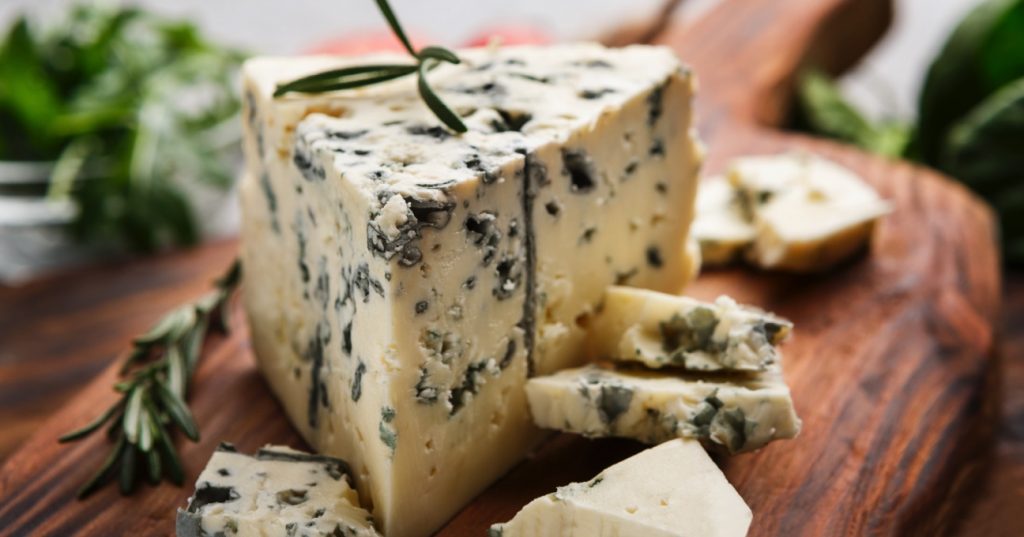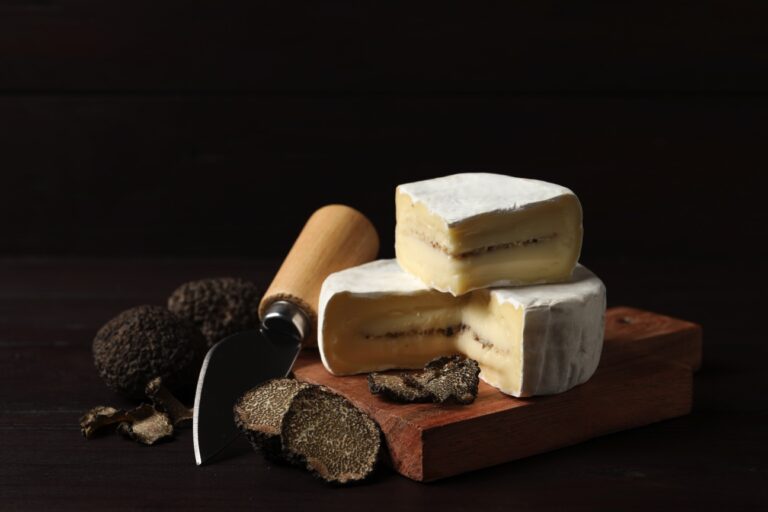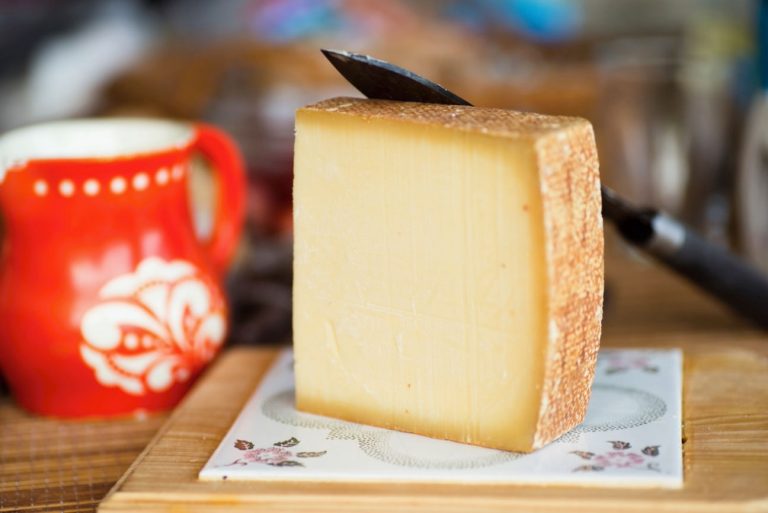
What is gorgonzola?
Gorgonzola is a crumbly soft to firm Italian cheese with distinct blue veins. It is produced from whole cow’s or goat’s milk which yields a creamy flavor contrasted by sharp notes.
It is usually aged about 2-4 months. Those aged for fewer months have a mild flavor (dolce) and versions aged up to six months have a stronger (piccante) flavor.
This artisanal cheese has been enjoyed since the 1st century AD. In 879, it was first produced in the Italian town of Gorgonzola (just outside of Milan).
Is gorgonzola blue cheese?
Yes, it is a type of blue cheese made visibly apparent by its blue veins.
The blue veins are caused by spores of Penicillium glaucum, a mold used in the production of gorgonzola along with several types of French blue cheeses like Bleu de Gex and Rochebaron. Penicillium glaucum is a sub-species of Penicillium roqueforti, the most commonly used mold for blue cheeses. Penicillium roqueforti has more of a greenish hue and is used to produce other blue cheeses like Roquefort, Stilton and Danish blue cheese.
How does gorgonzola taste?
It is a soft cheese with a largely rich and creamy flavor and a sharp, slightly spicy accent. There are two main types:
gorgonzola dolce
This variation has been aged less (often under 3 months) and has a mildly sweet and creamy flavor. There are hints of sour cream flavors as it has relatively less mold growth.
gorgonzola piccante
This variation has been aged longer (often more than 3 months) which yields a sharper taste. It’s also accompanied by a bit of spiciness since it allows for greater mold growth.
How do you know if it has gone bad?
It can be confusing to know whether or not you need to throw out your blue cheese since it’s supposed to have mold. Acceptable mold looks bluish and is embedded in the cheese. Unacceptable mold is white and often on the rind. You’ll also know if it is no longer edible if it smells gamey or like ammonia.
What can I put gorgonzola on?
There are many dishes that this blue cheese can go on. It can be crumbled, sliced or melted on savory foods such as these:
- pastas
- pizzas/flatbreads
- sandwiches
- salads
- steaks
- charcuterie boards
Note: Gorgonzola dolce is the best type for melting. 🙂
What does gorgonzola pair well with?
food
- fresh & dried fruit: apricots, figs, apples, pears, grapes and strawberries
- vegetables: broccoli, celery, cherry tomatoes, potatoes and squash/zucchini
- nuts: pistachios, walnuts, macadamia and pine nuts
- sweet spreads: honey, jams and preserves
wine
Gorgonzola dolce pairs best with soft light to medium-bodied wines such as:
- chianti
- merlot
- pinot blanc
- riesling
The piccante version pairs best with either full-bodied red wines or sweet wines like:
- cabernet sauvignon
- chianti classico riserva
- muscat
- ramandolo











